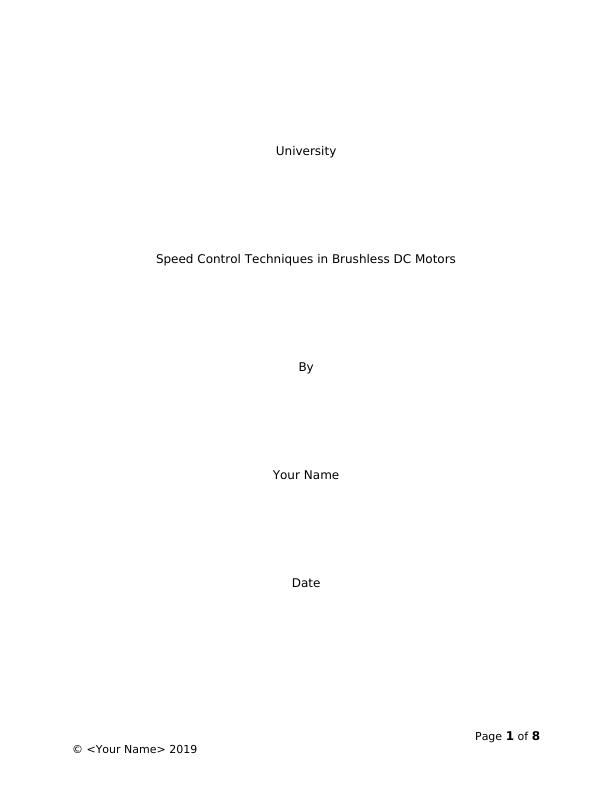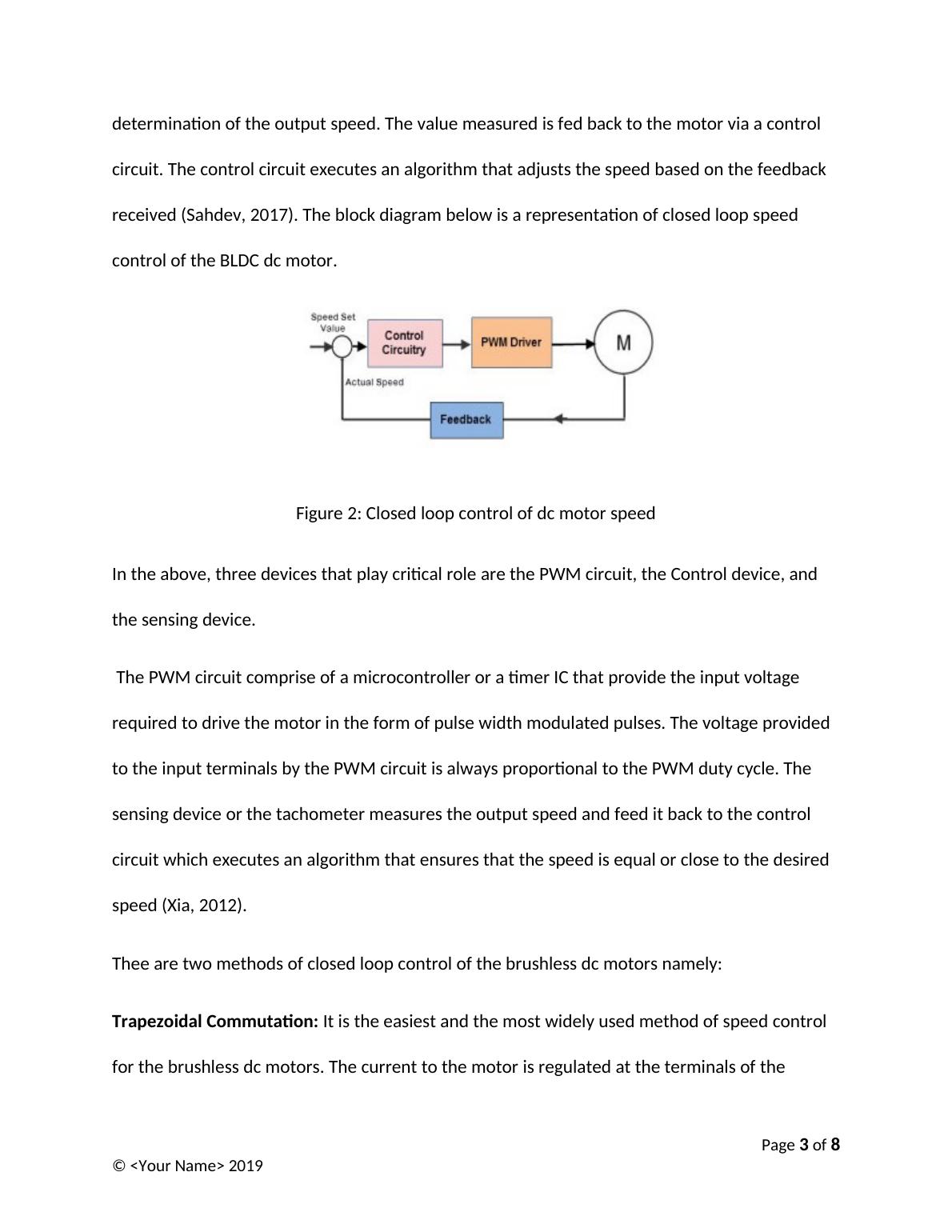Speed Control Techniques in Brushless DC Motors Report 2022
The assignment requires explaining the different methods of controlling the speed of a DC Brushless Motor, including circuit diagrams and images from the internet. The report should be 4 pages long and should focus on 3-4 different types of speed control methods.
8 Pages1344 Words16 Views
Added on 2022-10-19
Speed Control Techniques in Brushless DC Motors Report 2022
The assignment requires explaining the different methods of controlling the speed of a DC Brushless Motor, including circuit diagrams and images from the internet. The report should be 4 pages long and should focus on 3-4 different types of speed control methods.
Added on 2022-10-19
ShareRelated Documents
End of preview
Want to access all the pages? Upload your documents or become a member.
Speed Control of D.C Motor
|15
|2246
|372
Competency Demonstration Report (CDR)
|8
|1614
|95
Speed Controlling Techniques of DC Motors using PWM Technique
|8
|1815
|465
Unit 45 Industrial Systems - Assignment
|9
|1741
|441
Design and Develop of Power Factor Correction Assignment
|12
|1627
|83
Buck-Boost Converter Design and Analysis
|9
|846
|75



